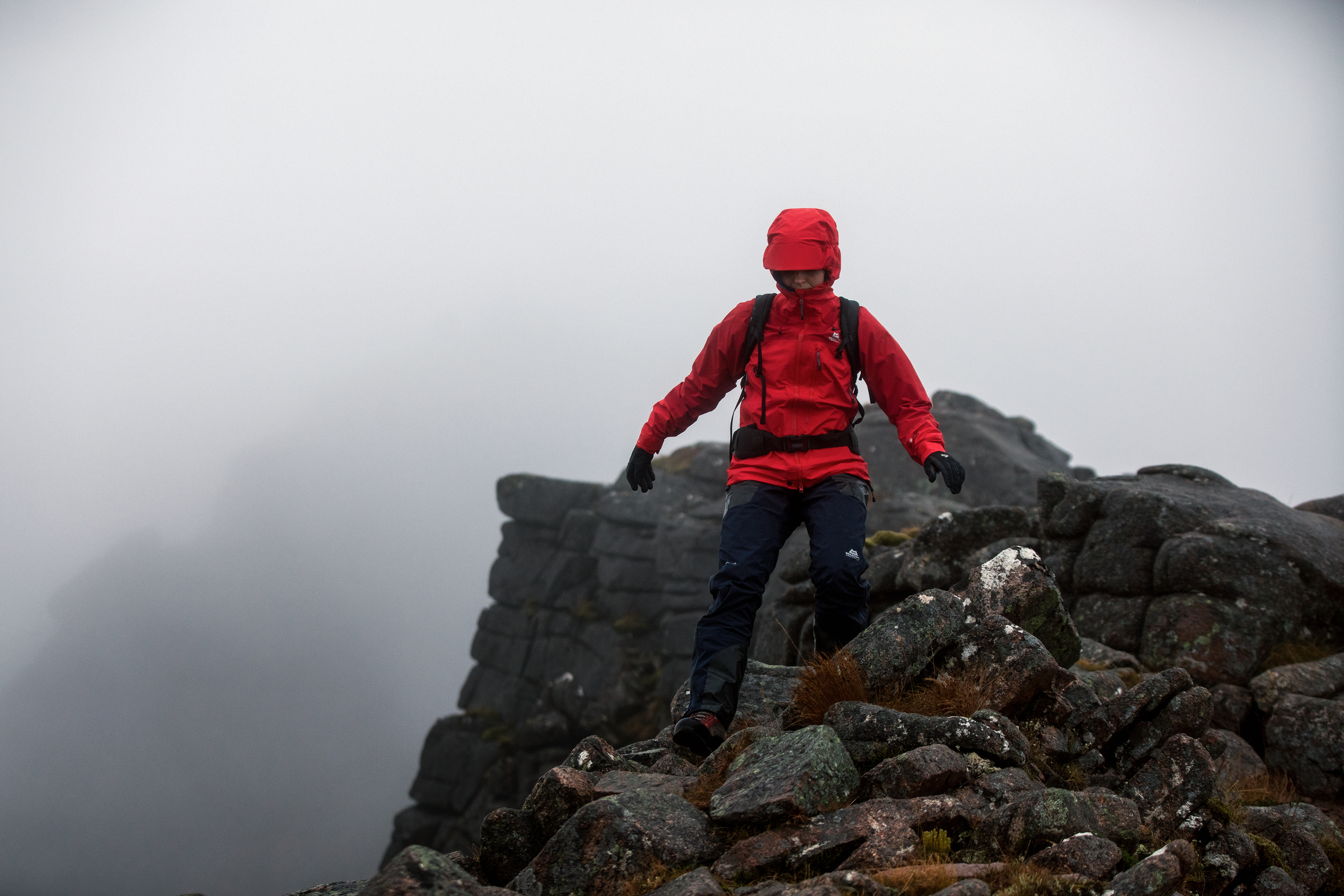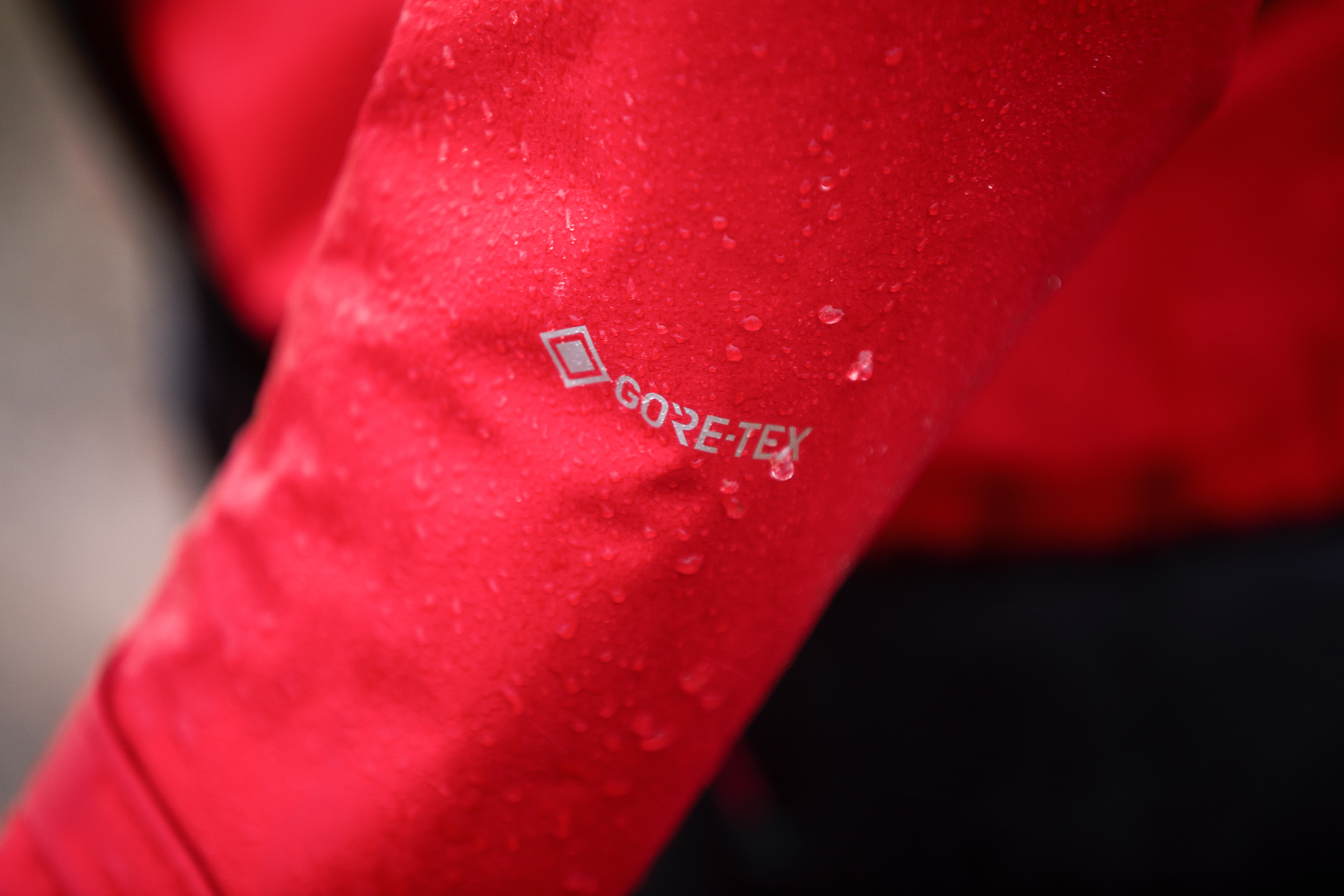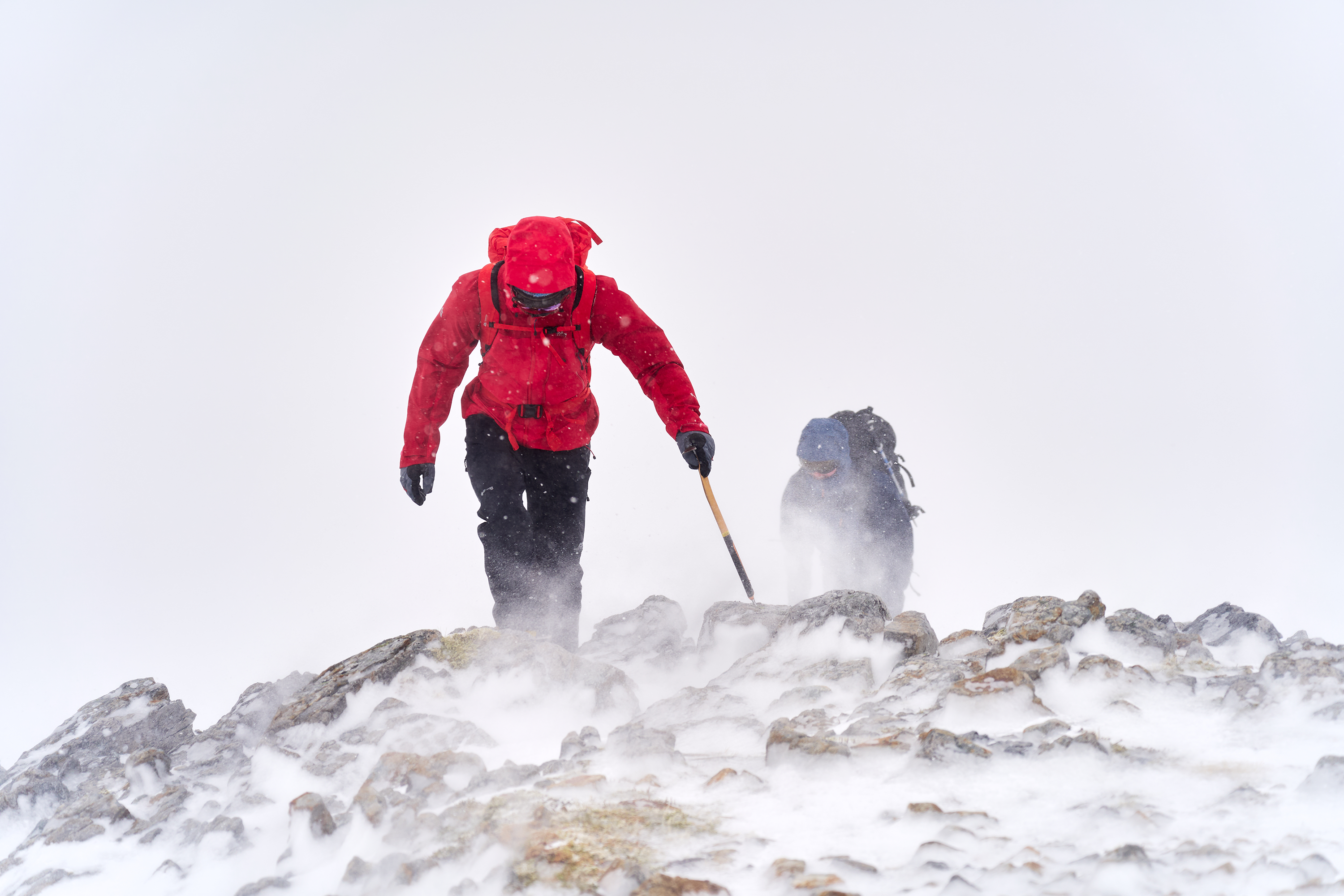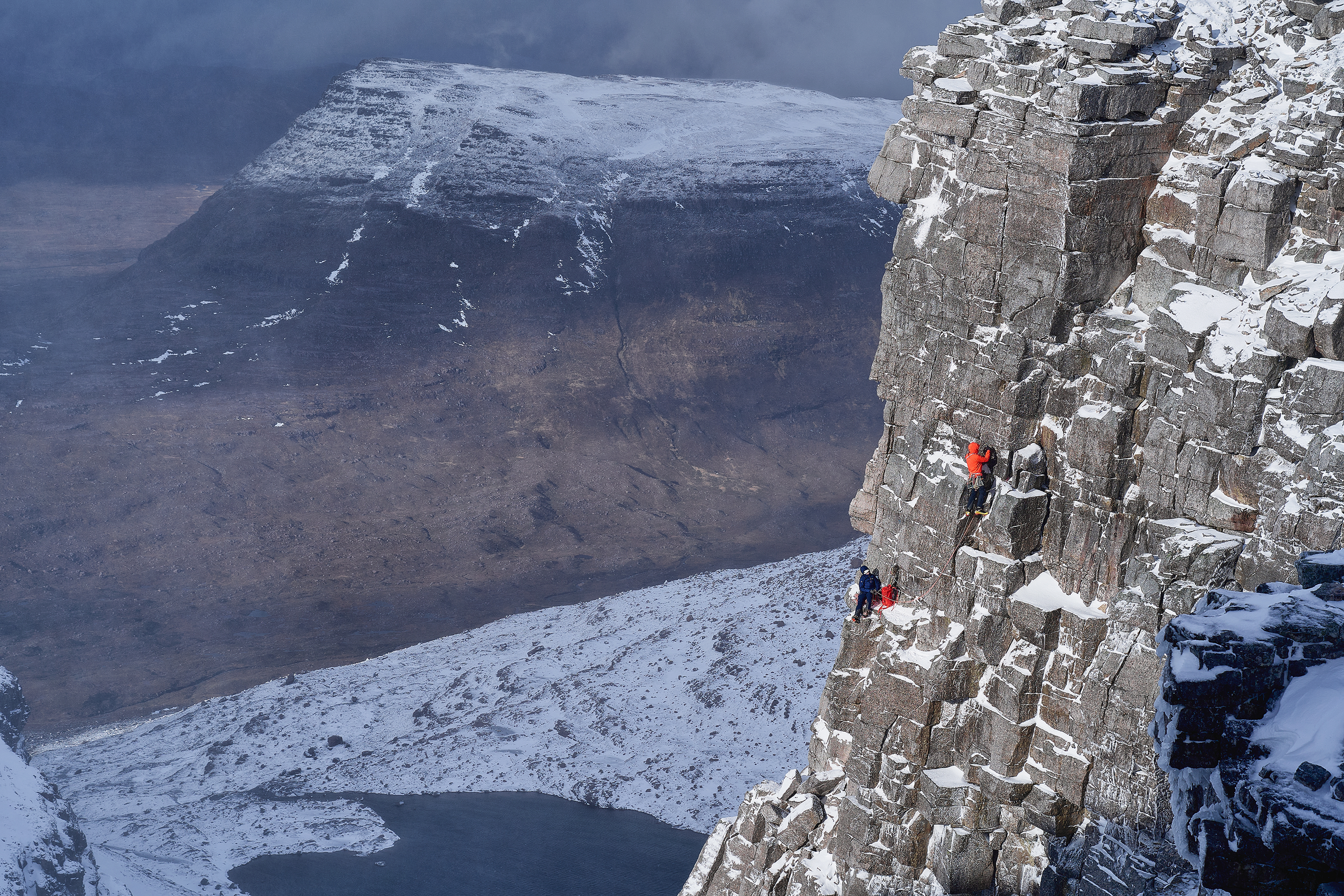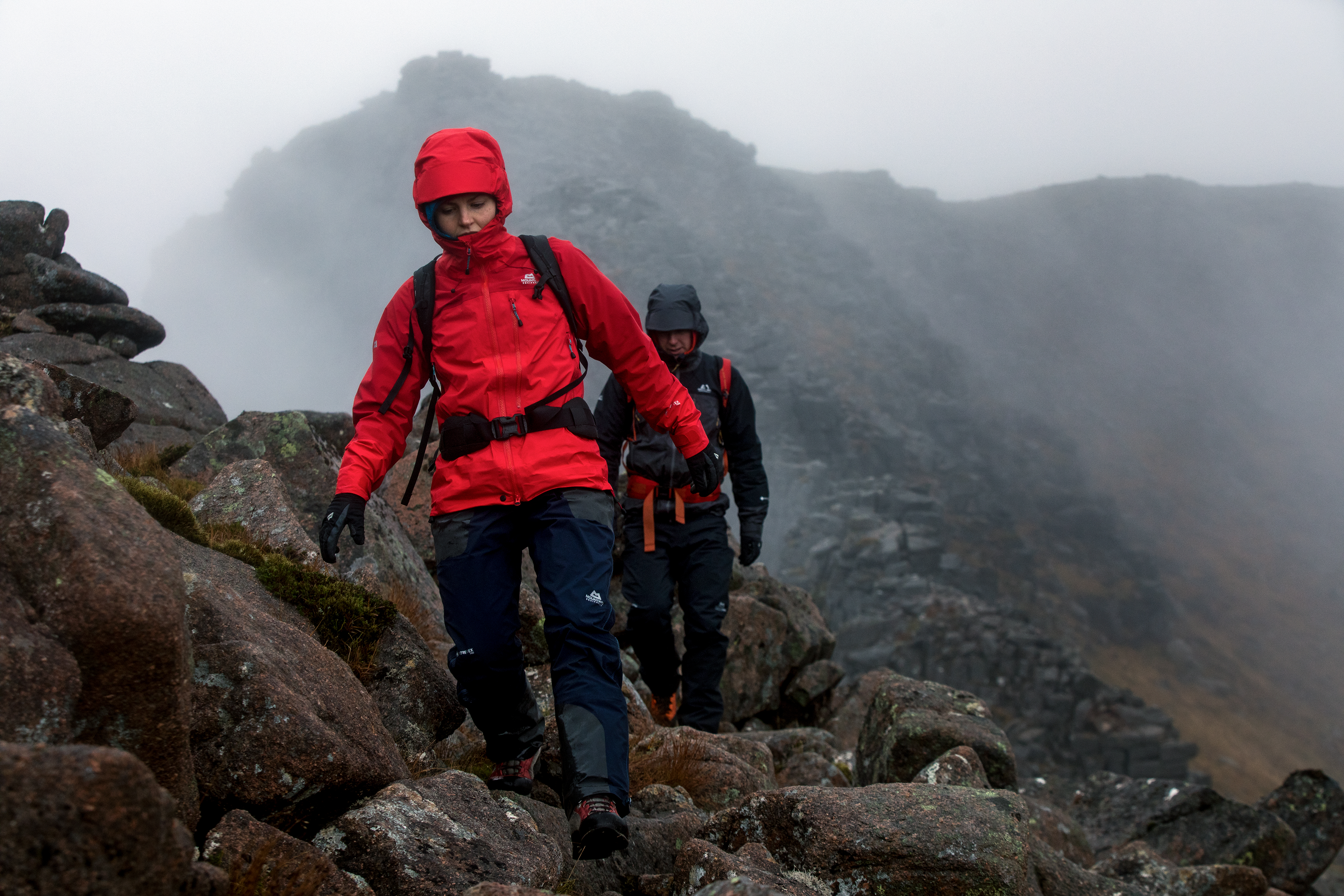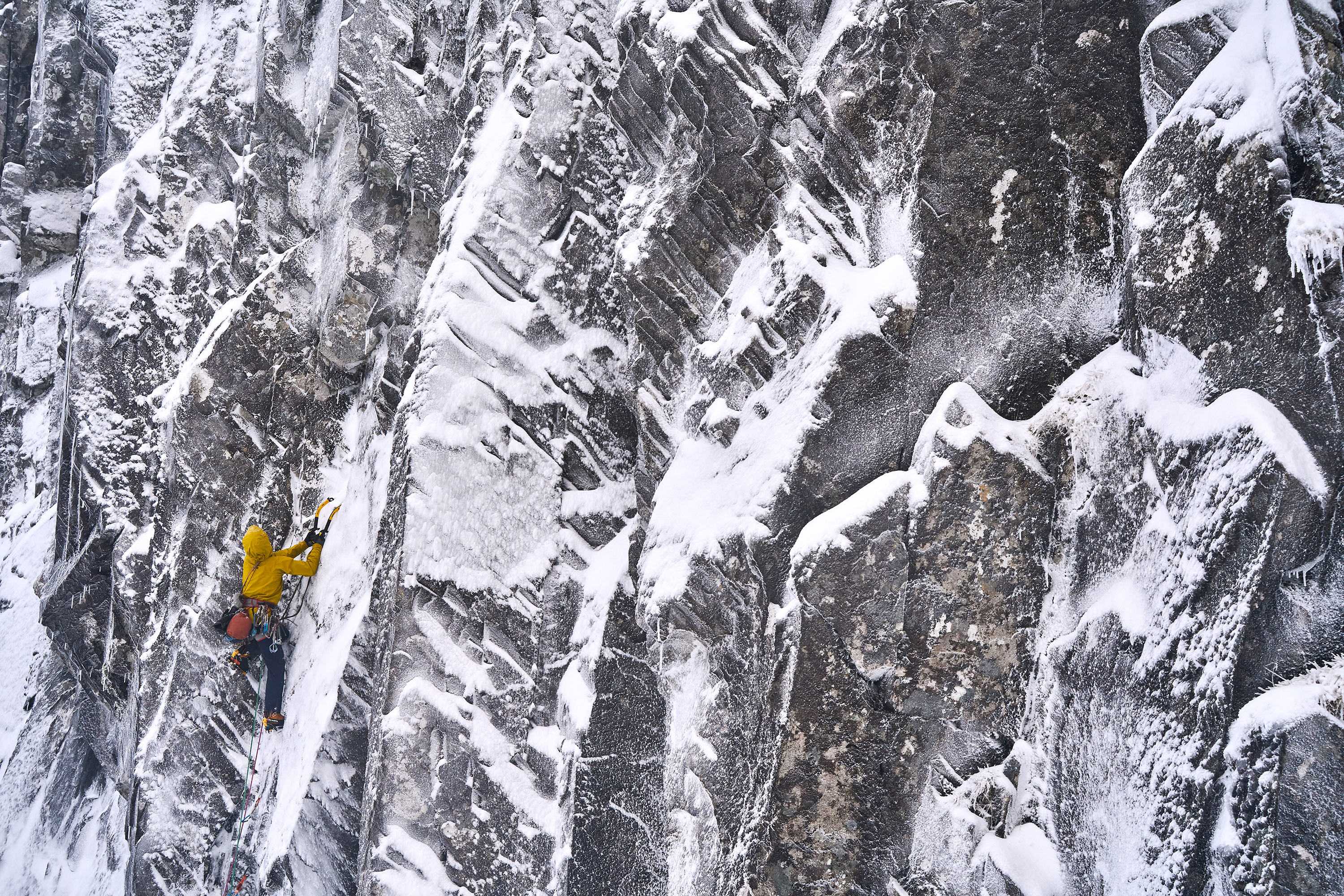Buying a waterproof
Waterproof clothing is deceptively complex: while it’s easy to make something waterproof it isn’t so easy to make it comfortable to wear. With terms like hydrostatic head, breathability, MVTR, RET, PFCs and DWRs there is a whole host of unhelpful jargon about waterproofs. This guide will cut through that and tell you what you really need to know.
Waterproof fabrics
-
GORE-TEX
GORE-TEX is the world’s leading waterproof fabric technology and we are one of Gore’s closest research and development partners. GORE-TEX is not only an extremely high performance product but has, in its ‘Guaranteed to Keep You Dry’ promise, one of the best warranties in the industry. GORE-TEX comes in numerous different versions, and each version comes in different weaves, with a greater denier ‘D’ (e.g. 40D, 80D), meaning greater fibre diameter which usually indicates greater fabric durability.
-
Drilite
Drilite is Mountain Equipment’s own waterproof fabric range and has over 25 years of heritage. Our Drilite fabrics are chosen from literally thousands of different options and only make the cut after hours and hours of testing and development work. Again, denier is a good gauge of ruggedness with a higher ‘D’ usually indicating greater durability.
Fit
A good fit is essential. If you are wearing a waterproof jacket for summer mountain running then the fit requirements are different to if you plan to use the jacket for winter climbing, and so consider not only your body shape but your intended use and what layers you plan to wear the jacket with. Ensure you can raise your arms overhead without exposing your midriff, that the cuffs are long enough to cover your wrists and prevent water coming down them, and that the hood allows you to look all around without restriction. In basic terms our Active Fit is our trimmest fit, our Alpine Fit a perfect middle ground, and our Mountain Fit our most roomy, but there may be slight variation from model to model.
Features
The most important thing to remember when buying clothing is that fabrics are nothing without a good garment: the best waterproof fabric is worthless if your hood doesn’t work, the cuffs don’t fasten neatly, and the seams leak. Consider what you are going to use the product for and whether it has the features that you want. Hoods, pockets and cuffs are perhaps the three most important factors, along with fit.
Construction: bonding, seams, stitching
How a garment is constructed is key to comfort, longevity, and is an excellent indicator of overall quality: it is hard to make a beautifully constructed waterproof garment, and neat seams and tidy bonding are indicative of high levels of craftsmanship. Our GORE-TEX PRO range uses construction techniques that aren’t available anywhere else, with seamless chinguards a particular highlight, and extensive bonding at the hem to reduce water uptake.
We use factories in Eastern Europe and in the Far East to make our waterproof clothing. Both are extremely skilled staffed by workers with years of experience, and from factories that are Fair Wear accredited.
Fabrics and Technology
Hydrostatic head
Hydrostatic head is a way of measuring how waterproof a fabric is, stated as a rating in metres or millimetres. It measures how high a column of water could stand on the fabric before it would begin coming through. A higher number means that the fabric is ‘more waterproof’. Even the most powerful wind-blown rain rarely exceeds the equivalent pressure of 500mm, but many fabrics advertise hydrostatic head figures of 10,000mm or even 20,000mm. That’s because higher pressures than those from rain can occur in situations like sitting or kneeling on wet ground, and because over time a fabric’s hydrostatic head can slowly degrade. All of our waterproof fabrics exceed a hydrostatic head of 20,000mm.
Breathability figures
‘Breathability’ is better termed moisture vapour permeability. It describes how much moisture can escape a fabric, and thus how sweaty a waterproof fabric may feel. it is a frustrating subject because of the huge number of different standards and methods used to determine it. Results from these methods can contradict one another and so it is hard to get a gauge for what fabric offers the ‘best’ breathability. All of our fabrics undergo moisture vapour permeability tests and we often use multiple standards to assess them. All of our waterproof fabrics have an MVTR (moisture vapour transmission rate) of greater than 20,000 g/m²/24h, which indicates extremely high vapour transfer and so means excellent comfort.
DWRs
A DWR is a ‘Durable Water Repellent’ finish that is applied to a fabric to help it repel water. They are a key part of maintaining comfort, of reducing drying times of a garment, and in promoting ‘beading’ of water on a fabric. They don’t last forever, however, and need to be revitalised or renewed regularly. For more information on this, see our care pages. Historically, almost all DWRs were PFC-based, which are the highest performing and longest lasting type, but environmental considerations mean that PFC-free options are becoming increasingly commonplace.
PFCs
PFCs are perfluorinated compounds. They are used in a very wide variety of products including cosmetics, cookware, and textiles. Their use has come under increasing scrutiny because they accumulate in the body and do not readily degrade; their use is now restricted. PFC-Free DWRs offer excellent water repellence but less oil/dirt repellence than PFC chemistries, and they require more regular reproofing to maintain performance. We are continually reviewing our use of PFCs to ensure not only excellent performance but to ensure excellent product sustainability too.
Sustainability considerations
Making a waterproof jacket is an energy-intensive process with many individual operations and lots of use of heat. The most important factor in making a sustainable waterproof garment, then, is that it lasts a long time and that the user doesn’t replace it until it is worn beyond repair: sustainability is often just as much about the end user as it is about the initial manufacture.
When it comes to buying a waterproof, these are perhaps the most important sustainability decisions: buying one that will last, that you will look after, and that you won’t get bored of or which will become unsuitable; buying a garment that can be repaired; buying a garment made with less impactful materials (e.g. recycled content) and less impactful chemistries (e.g. PFC free DWRs, environmentally conscious dyeing methods). For more information on caring for your waterproof, please see our care pages.

Waterproofs for winter sports
Ski Features
Choosing which waterproof jacket to ski in depends significantly on your intended use. For lift-skiing you may want pass pockets and a snow skirt, but for backcountry use you may want a simpler and lighter jacket. You may not ever ski in waterproofs and only ever wear softshell, or you may want to ski in an insulated ski jacket: you need to find what works for you. Ski legwear is slightly different, and hem diameter is the most important factor here: ensure that your hem will comfortably fit over your ski boots without being too baggy.
Waterproof Legwear
When buying waterproof pants the biggest considerations are fabric weight and the length of the side zips. If you use waterproof pants only as just-in-case overtrousers then a lighter weight pair that live mainly in your pack is sensible. However, if you are planning to wear them for longer periods – for example when winter climbing or hiking in prolonged wet weather – then a heavier pair will last a lot longer. Full length side zips can be a little fiddly to work with, but they can be put on even while wearing crampons or skis. ¾ length side zips are easily put on over hiking or big mountain boots, but are virtually impossible to get on over crampons or skis.
Winter-specific legwear considerations
If you’re using waterproof pants in winter then there are other features to look for. Internal gaiters are essential for keeping deep snow out of boots, even with modern gaitered boots; patches to increase durability in high wear areas are often beneficial; and a high waisted design keeps out unwanted draughts. Full bib salopettes might be ideal for skiing in very deep powder but aren’t necessarily ideal for winter mountaineering or climbing, being very warm and sometimes sweaty when worn with a waterproof jacket. For this reason, our Tupilak pants come with a high waist but not a full bib.


